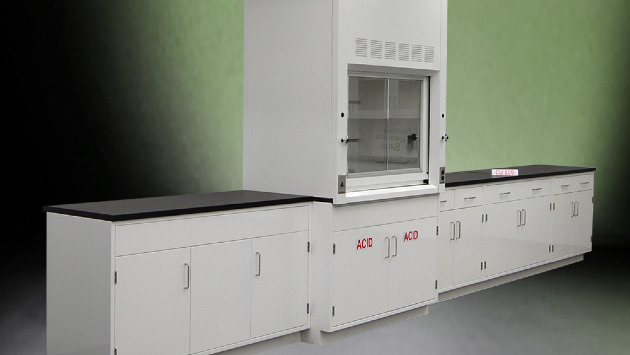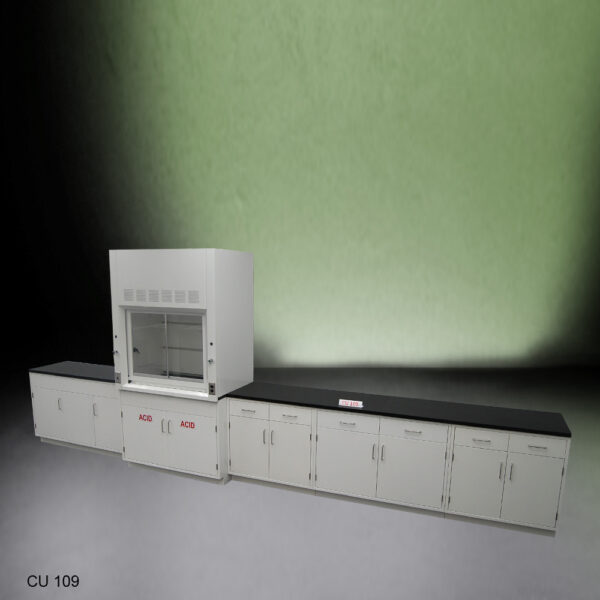What Does a Safe Lab Really Look Like?
Imagine a laboratory where every detail — from the width of aisles to the placement of emergency showers — is purposefully designed to minimize risk. Where scientists can focus on discovery without worrying about bumping into one another, hazardous fume exposure, or delayed access to emergency equipment. That level of safety doesn’t happen by accident. It’s built into the space, starting with thoughtful lab design.
A safe lab isn’t just a matter of procedures and policies. It’s a product of how the lab is planned, programmed, and constructed — and laboratory managers play a crucial role in making it happen.
Smart Design Prevents Accidents Before They Happen
Great lab design doesn’t just support productivity — it actively reduces risk. By taking a proactive approach during the design phase, you can:
- Prevent collisions, spills, and contamination
- Improve access to emergency equipment
- Comply with local and national safety regulations
- Design for the way people actually move and work in the space
Design Strategies That Improve Lab Safety
1. Code-Driven Safety Planning
Safety starts with following the right guidelines. Key documents that influence lab design include:
- USP <800>: Prioritizes lab technician safety by outlining spatial standards and cabinet configurations
- USP <797>: Focuses on sterility, particularly in pharmacy and cleanroom environments
- NFPA codes, IBC, and OSHA standards: Provide universal safety benchmarks
These codes guide everything from hazardous chemical storage to signage, finish selections, and decontamination procedures.
2. Clear and Functional Egress
Emergency evacuation starts with good aisle design.
- 5 feet is the standard lab aisle width to support accessibility and back-to-back work
- Consult with lab managers on whether wider aisles or alternate paths are needed for carts, wheelchairs, or frequent traffic
- Fume hoods and biosafety cabinets should be placed away from high-traffic and egress areas to reduce airflow disruption and fire hazards
3. Integrated Emergency Systems
When the unexpected happens, preparation matters:
- Eyewash stations: Should be installed near sinks for easy access and low cost
- Emergency showers: Must be unobstructed, well-lit, and reachable in 10 seconds (OSHA standard)
- Fire extinguishers and spill kits: Should be strategically placed and matched to the chemicals used
Designers should collaborate with EHS teams early in the planning process to determine ideal placement — not as an afterthought.
Prioritize Safety From the Start
A safe lab starts long before construction begins. It starts with:
- Early collaboration between architects, lab managers, and end users
- Reviewing SOPs and understanding how space is truly used
- Designing for both accident prevention and response
At the end of the day, a well-designed lab empowers people to work safely and confidently — every single day.
Don’t wait for an incident to rethink your lab layout. Partner with experts who understand both science and safety.
Let’s design your lab for safety, function, and future growth. Contact Fisher American today!
4′ Fisher American Fume Hood w/ ACID Storage & 15′ Laboratory Cabinet Group (CU-109)
Elevate your laboratory safety with CU 109—an advanced 4-foot fume hood designed for durability, energy efficiency, and cost savings. Featuring a dual glass sash and baffles for enhanced protection, this high-quality hood includes an acid storage cabinet, functional work surface, service valves, LED lighting, switch, and outlet. Customize your lab space with optional features like a sink, gooseneck faucet, extra service valves, and additional outlets.
Crucial Note: To ensure seamless operation, all hoods are hard-wired and require a blower.
Explore our diverse selection of base and wall metal cabinets, meticulously crafted with fully welded metal casework, premium Stainless Steel hardware, captivating Epoxy Paint, and sleek Black Laboratory Countertops. Our cabinets go beyond functionality; they embody quality, meeting the rigorous demands of any laboratory setting. Transform your lab experience with a perfect fusion of style and durability.



